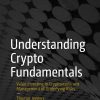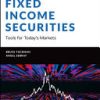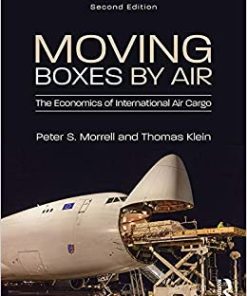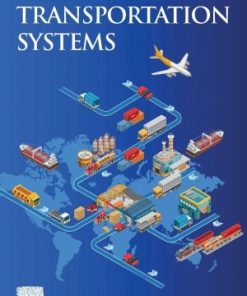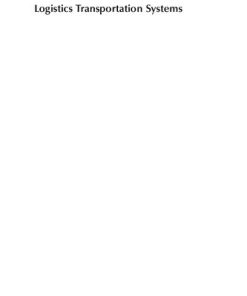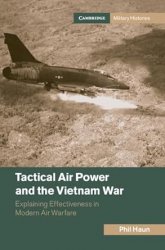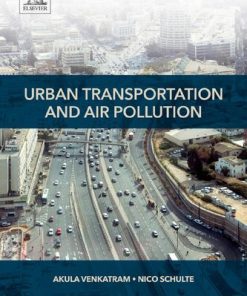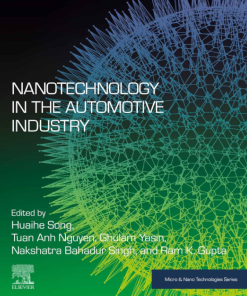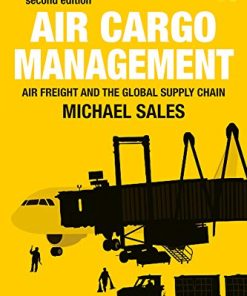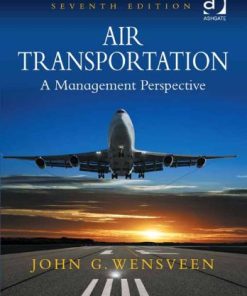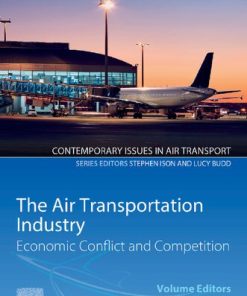(Ebook PDF) The Air Transportation Industry 1st edition by Rosario Macario 032391523X 9780323915236 full chapters
$50.00 Original price was: $50.00.$25.00Current price is: $25.00.
The Air Transportation Industry 1st edition by Rosario Macario – Ebook PDF Instant Download/DeliveryISBN: 032391523X, 9780323915236
Full download The Air Transportation Industry 1st edition after payment.
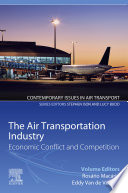
Product details:
ISBN-10 : 032391523X
ISBN-13 : 9780323915236
Author : Rosario Macario
The aviation sector consists of various actors such as airlines, ground handling companies, and others all with conflicting priorities. In order to understand how these actors position themselves in an increasingly competitive market, The Air Transportation Industry: Economic Conflict and Competition analyzes all the market segments in detail, examining such issues as which industrial economic structure drives decisions, the main economic problems, the consequences for negotiations between different actors, impacts on the global aviation market, and much more.
The Air Transportation Industry 1st Table of contents:
Chapter 1. Economic structure of the air transport business
1. Introduction
2. The market structure: highly competitive and heterogeneous
3. Evolution toward new business models
4. Possible conflict situations within and between actors
5. Conclusions
Chapter 2. The burden of a ton CO2! Emission trading systems and the air transport business
1. Introduction
2. The global challenge of climate change and CO2 emissions
3. Overview of global policies to address climate change
4. Air transport industry traffic and CO2 emissions
5. Policies to address CO2 emissions from international air transport
6. Measures available to reduce air transport CO2 emissions
7. Carbon Offsetting and Reduction Scheme for International Civil Aviation (CORSIA)
8. Analysis of the supply and demand for carbon offsets for CORSIA
9. The impact of CORSIA on air traffic and airline financial results
10. Conclusion
Chapter 3. Labor in the aviation industry: wages, disputes, and shocks
1. Introduction
2. Employment in the aviation industry
3. Wage determination
4. Monopsony (the power of the employers)
5. Monopoly (the power of the unions)
6. Bargaining power
7. Industrial action
8. Economic shocks
9. Conclusions
Chapter 4. The air transportation vertical channel, the global value added, and the role played by private versus public control
1. Introduction
2. The air transportation vertical channel
3. The aircraft manufacturers
4. The engine manufacturers
5. The leasing companies
6. The handlers
7. The distribution: GDS and others
8. Airports
9. Airlines
10. Conclusions
Chapter 5. Exogenous shocks on the air transport business: the effects of a global emergency
1. Introduction
2. Impact of COVID-19 on the airline business—the worst crisis since ever
3. A new era of nationalization?
4. How the industry is going to face the crisis
5. Conclusions
Chapter 6. The impact of regulation on the airport industry: the Italian case
1. Introduction
2. Airport regulation: a literature review
3. Airport regulation in Italy
4. The empirical analysis
5. Data
6. Empirical results
7. Conclusions
Appendix
Chapter 7. Airline pricing, incumbents, and new entrants
1. Introduction
2. Pricing principles: theory and literature
3. Deviant behavior: pricing as a barrier to entry
4. A possible generalization and alternative strategies
5. Conclusions
Chapter 8. The fight for airport slots: the case of Amsterdam Airport Schiphol
1. Introduction
2. The EU Slot Regulation
3. The changing context for slot allocation: COVID-19 and the airport capacity crunch
4. The implications for growing excess demand for slots: theory and research findings
5. The implications for growing excess demand for slots: the case of Amsterdam Airport Schiphol
6. Conclusions
Chapter 9. Different approaches to airport slots. Same results, same winners?
1. Introduction
2. Airport slot allocation approaches in the world and the problems emerging
3. Discussion of the solution alternatives to the problems emerged from allocation approaches
4. Proposal of a new and untraditional auction mechanism for airport slot allocation
5. Analysis of airline agents’ bidding behavior in ASAM
6. Case study: application of ASAM to a synthetic auction market of Heathrow Airport
7. Discussion of the proposed model ASAM and results
8. Conclusions
Chapter 10. Black swans or gray rhinos on the runway? The role of uncertainty in airport strategic planning
1. Introduction and research questions
2. Increasing year-to-year traffic volatility at airports
3. High-impact shock events and deep uncertainty
4. Absorbing rare, high-impact shock events in airport strategic planning
5. Final observations and conclusions
Chapter 11. Making sense of airport security in small and medium-sized airports
1. Introduction
2. A brief history of air transportation security
3. Regulatory framework
4. Air transport security costs
5. Proportionality of security in airports
6. A new approach for security in a network of airports
7. Conclusion
Chapter 12. How can airports influence airline behavior to reduce carbon footprints?
1. Introduction
2. Evolution in air transport traffic and impacts worldwide
3. Airports environmental practice and carbon reduction initiatives
4. Challenges in environmental sustainability practice at airports and ways forward
5. Negotiation
6. Good practice recommendations and opportunities
7. Conclusions
Chapter 13. The measurement of accessibility and connectivity in air transport networks
1. Introduction
2. An overview of air transport accessibility
3. Air transport accessibility and related concepts
4. A tentative future research agenda
5. Conclusions
Chapter 14. Fighting for market power: the case of Norwegian Airlines
1. Introduction
2. Why did EU deregulation initially not affect the Norwegian domestic airline market?
3. Phases in airline strategic behavior following the deregulation
4. Airport competition
5. The low-cost carrier Norwegian’s continued growth strategy
6. Concluding remarks
Chapter 15. Is privatization of ATC an economic game-changer? Who gains and who loses?
1. Introduction
2. Definitions
3. Literature review
4. The emergence of the ANSP business model and its impact on ATM/CNS profits
5. Conclusions
Chapter 16. The forwarders’ power play effect on competition in the air cargo industry
1. Introduction
2. Freight forwarders in a literature review
3. The business model of the air freight forwarder
4. Concentration in the air freight forwarding industry
5. Freight forwarders at major European cargo airports
6. Conclusions
Chapter 17. Fuel hedging: how many games can we play?
1. Fuel costs’ relevance in aviation
2. Fuel hedging fundamentals
3. Hedging in reality
4. Recent developments
5. Conclusions and future outlook
Chapter 18. The effect of accidents on aircraft manufacturers’ competition
1. Introduction
2. Aircraft accidents, aircraft safety, and airline stock prices: a literature review
3. The aircraft manufacturers market: the story of a continuous consolidation
4. Aircraft accidents: a historic overview of air travel from safe to safest way of travel
5. The impact of accidents on aircraft manufacturers’ competition
6. Why are airlines so faithful to their chosen aircraft manufacturer?
7. Conclusion
Chapter 19. How strategy can influence the market: recommendations and conclusions
1. Introduction
2. Market structures
3. Current market structure
4. What will the future bring?
5. Conclusions
People also search for The Air Transportation Industry 1st:
what is air transportation course
explain air transportation
the transportation industry
the air transport command
the air transportation safety and system stabilization act
Tags:
The Air,Transportation,Industry,Rosario Macario
You may also like…
Business & Economics - Management & Leadership
Jurisprudence & Law
History - Military History
Tactical Air Power and the Vietnam War: Explaining Effectiveness in Modern Air Warfare 1st edition
Chemistry - Chemistry - General & Miscellaneous
Business & Economics - Logistics
The Air Transportation Industry : Economic Conflict and Competition 1st Edition Rosario Macario


